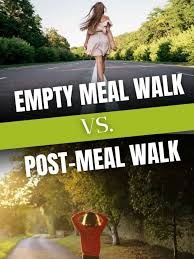
Follow WOWNEWS 24x7 on:
Updated: June 08, 2025 07:57

Walking is one of the easiest and most efficient ways to exercise, but timing is everything. Should you put on your shoes before breakfast or go for a walk after eating? Experts explain the pros and cons of both methods.
Fat Burning & Metabolism Boost
Walking in the morning on an empty stomach, or fasted cardio, prompts the body to burn stored fat as fuel.
Research indicates that walking when fasting can burn as much as 70% more fat than post-dinner strolls.
Daytime strolls can boost metabolic rate and assist with long-term weight management of fat.
Digestion & Blood Sugar Regulation
A walk after meals helps digestion by activating the digestive system and easing bloating.
Post-meal walking assists blood sugar regulation, making it a suitable activity for individuals with diabetes or insulin resistance.
Brief walks of 10–30 minutes after eating can ward off the glucose spike and enhance gut health overall.
Mental Clarity & Energy Levels
Blood flow to the brain is enhanced through walking while fasting, which enhances concentration and decreases tension.
Walks after eating can avert drowsiness and keep energy levels consistent during the day.
Both walks benefit mood and cognitive function.
Cardiovascular & Long-Term Health Benefits
Pre-breakfast walking might stabilize blood pressure and make the heart more powerful.
Post-meal walks have also been associated with reduced triglyceride levels, which aid in heart health.
Experts suggest making both kinds of walks a part of a routine for well-rounded benefits.
The best option finally relies on personal goals of health. Whether one is seeking fat reduction, digestive assistance, or mental sharpness, both types of walks have their own benefits.
Sources: India Today, Times of India, NDTV.


